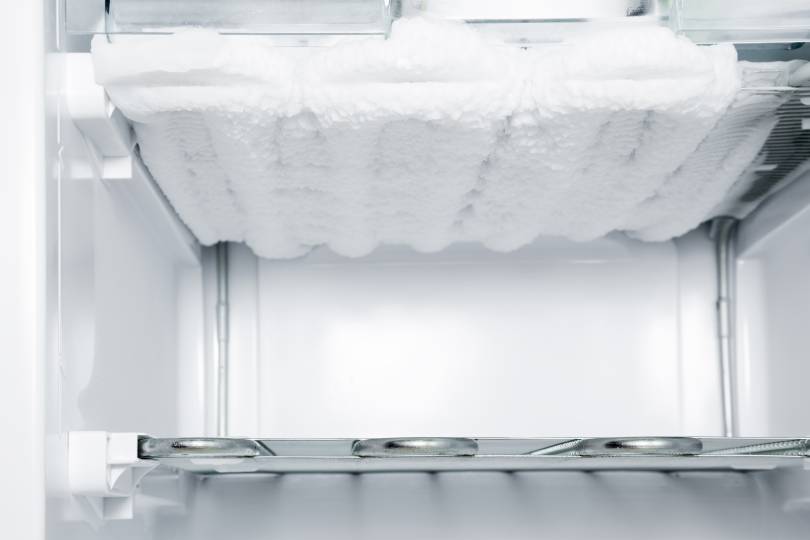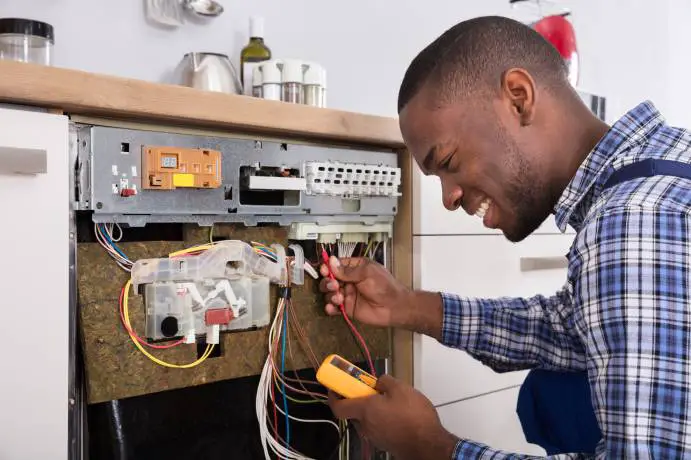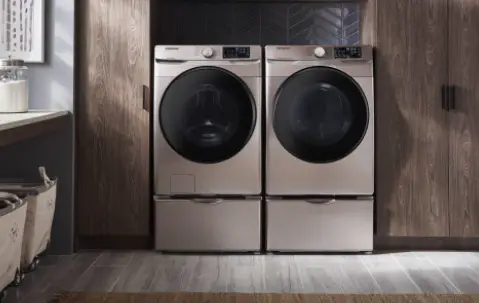
Connect with the Expert via email, text or phone. Include photos, documents, and more. Get step-by-step instructions from verified Tech Support Specialists.
We’ve all been there. We turn on the air conditioner, and it doesn’t seem to be cooling off as fast as we want it to. We wait for a few minutes, but still the room isn’t cold enough. We might try turning the thermostat down to cool faster, but then it seems too cold when we walk into the room. So what do we do? We can either leave it off and let it defrost, or turn it on full blast to speed up the process.
But is that really necessary? Why not just wait for the air conditioner to finish defrosting itself? What does a defrost cycle even do? And how long does a defrost cycle take? Today we will be looking at all of these questions in order to determine whether or not you should force a defrost cycle on your Samsung refrigerator or not.
The Defrost Cycle
A refrigerator uses a coil in order to transfer heat from the inside of the refrigerator to the outside. The coil is placed on the back wall of the refrigerator, and this is where the refrigerant moves from one side to another.
There are two types of coils used in air conditioners: a condenser coil and an evaporator coil. A condenser coil is located outside of the home, while an evaporator coil is located inside of the home. In a refrigerator, we have both coils in one unit – a compressor, condenser, and evaporator all in one.
Connect with the Expert via email, text or phone. Include photos, documents, and more. Get step-by-step instructions from verified Tech Support Specialists.
When ice begins to form on these coils, it reduces their efficiency and increases energy consumption. This means that you are spending more money than you need to be spending on your utility bill every month.
So what does a defrost cycle do? It melts the ice off of the coils. How does it do this? The defrost cycle heats up the air that is flowing through the refrigerator coils. This heat then melts the ice off of the coils. This air is then cooled down again, and sent back into your refrigerator to cool down your food.
This process can take anywhere from 15 minutes to an hour, depending on how much ice needs to be melted off of your refrigerator coils. Once it has been completed, you can enjoy more efficient cooling from your Samsung refrigerator for many years to come.
The Benefits of Defrosting
Now that we’ve gone over all of the reasons why you should force a defrost cycle on your Samsung refrigerator, let’s take a look at all of the benefits that come with doing so.
Less Expensive Utility Bills
As we mentioned earlier, you will save money on your utility bill every month if you force a defrost cycle on your Samsung refrigerator. The reason for this is because your refrigerator will run more efficiently. Since the heat exchanger and evaporator coils in your refrigerator won’t be clogged with ice, it will cool off faster and use less energy to do so.
Longer Life Span
Not only will you save money on your utility bill every month, but you will also get more life out of your Samsung refrigerator. If you force a defrost cycle every couple of months, then the evaporator coils and heat exchanger in your refrigerator won’t be clogged with ice and grime. This means that your refrigerator will run more efficiently and last longer.
No Freezer Burn
Freezer burn is when food in your freezer has lost its flavor and nutrients due to air reaching it from the outside. It is caused by a lack of circulation and not defrosting your refrigerator.
Smoother Ice Cubes
Ice cubes that come from a Samsung refrigerator that has been forced to defrost will be smoother than ice cubes from a refrigerator that hasn’t been forced to defrost. This is because ice cubes from a refrigerator that hasn’t been forced to defrost will have pieces of ice and other debris in them.

Help with setup and starting issues, blinking error lights & all your repair needs in just minutes
Ask a Repairman Live NowThe Risks of Not Defrosting
If you leave your Samsung refrigerator in a defrost cycle for too long, it can lead to a number of problems. These include:
Leaking Freon
The Freon in your Samsung refrigerator is what keeps the air inside cool. If the Freon leaks out, your refrigerator will not be able to cool properly. If you are leaking Freon, you will know because your Samsung refrigerator will be loud and inefficient.
Corrosion
If your Samsung refrigerator does not have a defrost cycle, the ice and frost that forms on the coils of the air conditioner can cause corrosion to occur. This means that the coils won’t be able to effectively cool down your Samsung refrigerator anymore, leading to a shorter lifespan for your appliance.
Rusting
The more corrosion that occurs in your Samsung refrigerator, the more likely it is that rusting will happen as well. This will make it much harder for your refrigerator to maintain a steady temperature and will require you to replace parts sooner than expected.
Temperature Variation
Without a defrost cycle, your Samsung refrigerator will be unable to maintain a steady temperature. This means that the temperature in your refrigerator will be either too cold or too warm, and the temperature of your freezer will be constantly changing as well.
Should You Force a Defrost Cycle?
If you don’t have an automatic defrost cycle, then yes – you should force a defrost cycle if you want to get maximum efficiency out of your Samsung refrigerator. By doing so, you will save money on your utility bill every month and make your refrigerator last longer.
You should only force a defrost cycle if you have ice on your coils. If there is no ice on your coils, then you don’t need to force a defrost cycle. If you have ice on your coils, then the next time that you run your Samsung refrigerator, turn it off and let it defrost for a while. Then turn it back on and let it cool down completely before using it again.
If you notice that the ice has not melted after 15 minutes, then you should turn the refrigerator off and let it defrost for another 15 minutes before turning it back on again. If the ice still hasn’t melted after that, then let it sit for another 15 minutes before turning it back on again.
It can take anywhere from an hour to a few hours for the entire process to be completed, depending on how much ice needs to be melted off of your Samsung refrigerator coils. So make sure that you leave enough time in between when running your Samsung refrigerator so that all of the ice can melt before turning it back on again.
Max Anthony
Mainly Max Anthony is an athletics tutor & lives in Texas but that's not it. He's is also a music producer, content creator, record producer, writer, and session musician. He has been producing music and engineering at a lower level for over 5 years. His passions include quality music gear and that's what he loves to write about on HifiBeast. ( Shoot him an email now )
Help with setup and starting issues, blinking error lights & all your repair needs in just minutes
Ask a Repairman Live Now


